When one donates blood for a medical operation, it is a gesture to save lives. When institutions such as the National Art Gallery receive objects of art as an act of donation, this can be seen as contribution to the perpetuation of the Bulgarian spirit and its creative energy, to the spiritual unity of artists and audiences of different epochs and nationalities. These are some of the thoughts that come to mind when one visits the newly unveiled exhibition at Sofia-based National Art Gallery – The Palace entitled "DONATIONS 2015-2018".
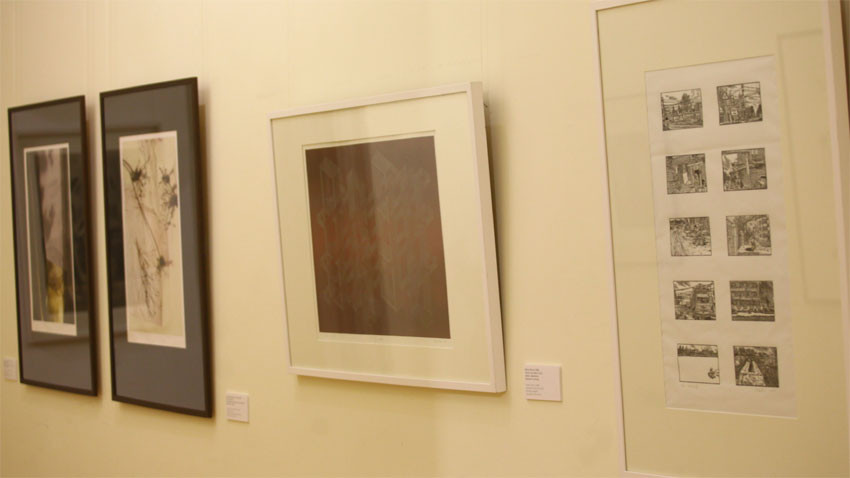
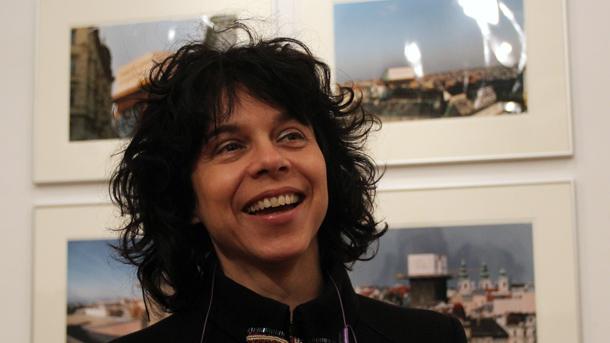 As the gallery director Yaroslava Boubnova said, the idea of the exhibition came up last year following a donation made by the world-renowned American photographer Roger Ballen working in South Africa. It turns out that for the past 4 years the collection of the National Gallery has been enriched with 360 works donated by 44 individuals and legal entities. The proceeds are mainly from Bulgarian and foreign institutions, companies and private collectors, artists and their heirs, connoisseurs. Donating becomes a gesture that we encounter more and more rarely, “ and donating an artefact to a public institution, to a state-run art gallery, means to give to so many people, it’s like giving it to almost everyone”, Mrs. Boubnova believes.
As the gallery director Yaroslava Boubnova said, the idea of the exhibition came up last year following a donation made by the world-renowned American photographer Roger Ballen working in South Africa. It turns out that for the past 4 years the collection of the National Gallery has been enriched with 360 works donated by 44 individuals and legal entities. The proceeds are mainly from Bulgarian and foreign institutions, companies and private collectors, artists and their heirs, connoisseurs. Donating becomes a gesture that we encounter more and more rarely, “ and donating an artefact to a public institution, to a state-run art gallery, means to give to so many people, it’s like giving it to almost everyone”, Mrs. Boubnova believes.
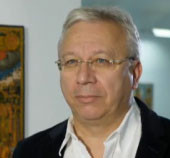 One of the prominent donors of the current exhibition is Rumen Manov, a historian, gallery curator and collector, and the work he donated is of Bulgaria’s great Renaissance painter Dimitar Zograf /1796-1860/ - "The Mother of God of the Life-Giving Font" dating back to 1849. In 2017, Mr Manov was declared “National Enlightener of the Year". And literally a few days ago he made another donation – this time consisting of three ancient icons, to the Museum of Christian Art. What motivates him in these charitable deeds? The answer cannot be unambiguous, the donor said, talking to Radio Bulgaria:
One of the prominent donors of the current exhibition is Rumen Manov, a historian, gallery curator and collector, and the work he donated is of Bulgaria’s great Renaissance painter Dimitar Zograf /1796-1860/ - "The Mother of God of the Life-Giving Font" dating back to 1849. In 2017, Mr Manov was declared “National Enlightener of the Year". And literally a few days ago he made another donation – this time consisting of three ancient icons, to the Museum of Christian Art. What motivates him in these charitable deeds? The answer cannot be unambiguous, the donor said, talking to Radio Bulgaria:
"It’s just that I feel we must stop exporting, let's get some stuff imported here. Let us preserve a part of the memory of Bulgaria ... these are things related to the Bulgarian culture, to our spirituality. Sometimes, as time goes by perhaps, one comes to a point where one feels that individual joy is not a complete joy if one cannot share it with other people. "
Donation in Bulgaria dates back to the rule in the period of 852-889 of Tsar Boris First, the Prince of Christian Bulgaria who adopted Christianity in our lands. Particularly great is the rise of this noble activity through the Bulgarian National Revival Period /at the end of the five-century-long Ottoman domination/. In that period many churches and monasteries were built and decorated thanks to the funds provided by donors. We are reminded of this sombre yet spiritually enlightened period by another work in the exhibition, "The Mother of God of Kykkos and Saints" (1797).
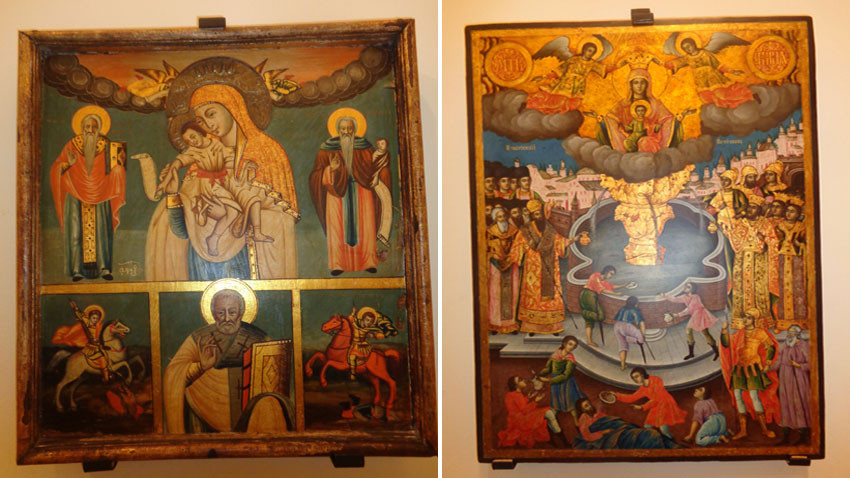
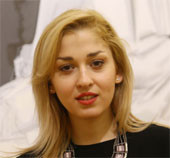 "The exhibition comprises about 50 works that are mostly rare or for the first time shown to an audience. It is quite diverse in terms of genres and styles: it features icons, paintings, graphics, sculptures, installations, objects. These are works of various generations of artists who have left their lasting traces with a remarkable presence in the world of art," said the curator of the exhibition Boryana Valchanova.
"The exhibition comprises about 50 works that are mostly rare or for the first time shown to an audience. It is quite diverse in terms of genres and styles: it features icons, paintings, graphics, sculptures, installations, objects. These are works of various generations of artists who have left their lasting traces with a remarkable presence in the world of art," said the curator of the exhibition Boryana Valchanova.
Among Bulgarian classics we see the names of Tseno Todorov and Vasil Barakov, the sculptors Ivan Lazarov and Lyubomir Dalchev. Works by modern authors such as Ivan Ivanov, Zahari Kamenov, Ivan Dimov, Chavdar Petrov are also shown. Among the world's names are the cosmopolitan Bulgarian Christo (Hristo Yavashev) and his wife Jeanne-Claude, as well as the challenging photographer Roger Ballen. Our region - the Balkans - is also represented by Turkish artist Aynur Pehlivanli.
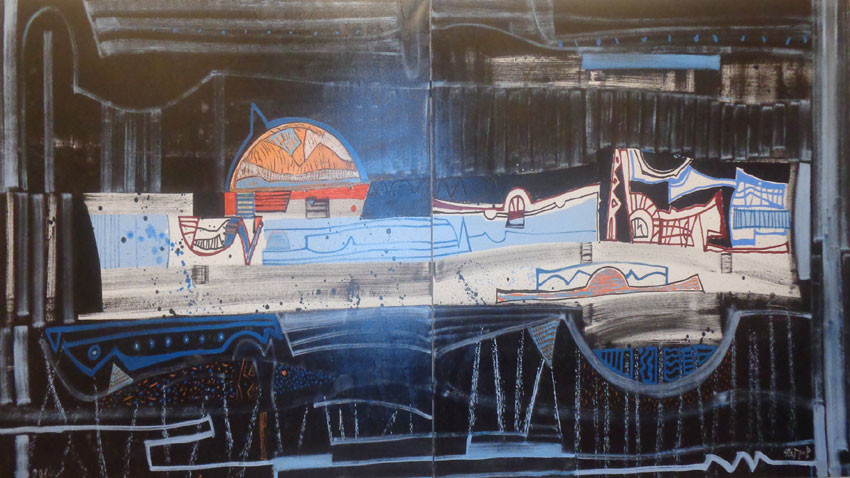
Meanwhile, donations continue to be received. At the opening, the first donation from the Svetlin Rusev collection was announced and it was made by the heirs of the great artist - his daughters Ralitsa and Milkana Rusev. This is the gypsum original of the sculpture entitled "Back to War" by Ivan Lazarov. The work will soon be put on display in the halls of the National Art Gallery.
"I would call this exhibition “The Story of the White Bird”, Boryana Valchanova also said, "because donation in modern days is like a white bird in our artistic life, rising high in the value scale of society." In Bulgarian mythology the White Bird, or the White Swallow, is perceived as a symbol of hope, of good. And here we have new hope, because more and more people help others to love art and to enjoy its life-giving rays.
English Rossitsa Petcova
Photos: nationalgallery.bg, BGNES and Veneta Pavlova
At a special ceremony at the Romanian Embassy in Sofia, Ambassador Brândușa Ioana Predescu presented Bulgarian conductor Nayden Todorov with the Order of Cultural Merit with the rank of Grand Officer. "We are here to honor today your Maestro whom I..
Spanish writer Ana Andreu Baquero is coming to Bulgaria to present her novel "The Princess of Buchenwald" , the Cervantes Institute, which is organising the event with the Hermes publishing house, announced. The presentation of the book is scheduled..
On February 12, in the cosy space of the Bulgaria Gallery in the heart of Rome, compatriots and Italians will gather to commemorate a Bulgarian healer who with perseverance and dedication managed to change the lives of thousands of..

+359 2 9336 661
